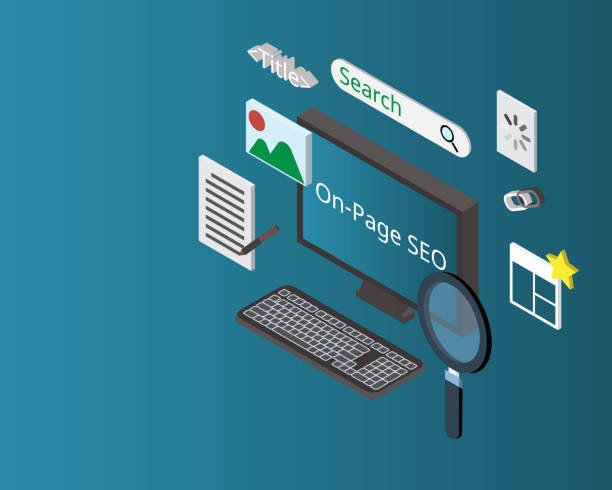Introduction
In today’s digital world, everyone wants to get their website or blog And SEO-Friendly Content to the top of Google’s search results. There are certain strategies to follow to make your content SEO friendly. SEO (Search Engine Optimization) is a technique that optimizes your content for search engines to rank higher.
In this article, we will discuss in detail what is most likely to be your SEO friendly content that ranks high on Google. With each headline, you’ll find a comprehensive guide to help you rank your content higher in Google’s search results.
1. Keyword Research: The First Step in Content Strategy

Keyword research is the first and most important step of SEO. Keywords are words and phrases that log searches on search engines. Effective keyword research allows you to understand what your target audience is searching for.
There are tools for you to use like Google Keyword Planner, Ahraf, or SEMrush. The tools give you information about search volume, competition and related keywords. It’s important to strategically place primary and secondary keywords in your content, but remember to use keywords in a natural way that doesn’t affect the readability of the content.
2. High-Quality Content: SEO-Friendly Content
Google’s algorithm favors high-quality and valuable content. Your content should be informative, engaging and relevant. Writing content in such a way that readers will get the information they want. Long-form content (eg 1500-2000 words) that covers the topic in detail is more effective.
Always use research and data until your content is credible. Readability of content is also important; Use headings, subheadings, and bullet points so readers can easily skim the content.
3. On-page SEO: Optimize your content

On-page SEO is where you optimize your content elements. These include title tags, meta descriptions, headings (H1, H2, H3), and internal linking. The title tag is the primary headline of your page and should include the primary keyword.
A meta description is a summary that appears in search results; It’s attractive and keyword-rich banana essentials. Using headings and subheadings keeps your content organized and readable. Internal linking allows you to link to other pages on your website to improve SEO and user experience.
4. Mobile Optimization: Importance of Responsive Design
Nowadays, more and more users access the internet from mobile devices, so mobile optimization is very important. Google uses mobile-first indexing, which means it primarily indexes the mobile version of your website. Make sure your content looks good on different devices and screen sizes with responsive design. A mobile-friendly website provides a better user experience, which improves bounce rates and overall SEO rankings.
5. Page Loading Speed: Faster websites for better ranking
Page load speed is also an important SEO factor. Slow loading pages frustrate users and leave the website quickly. Google ranks websites that load fast. Image optimization, browser caching, and removing unnecessary scripts are essential to improving your website’s speed. Tools use Google Page Speed Insights and GT Metrics to check your website speed and are able to improve.
6. Incorporating Multimedia: Improve user experience
Multimedia content such as images, videos, infographics, and audio make your content attractive and enhance the user experience. Use descriptive file names and alt text to optimize multimedia content, which integrates with SEO. Alt text tells search engines in the image’s content bar and is helpful for visually impaired users. Multimedia content not only enriches the user Engagement also increases the chances of your content being shared.
7. User Experience (UX): Intuitive Navigation and Design
User experience (UX) is an important aspect of SEO. Your website design and navigation should be user friendly. Intuitive navigation makes it easy for users to reach the content they want. Clear calls to action (CTAs) and well-organized layouts provide a better user experience. Optimizing UX factors such as page layout, readability, and site structure is essential so that users can quickly and efficiently access content based on their search intent.
8. Content freshness: Maintain relevance with regular updates
Google loves fresh and updated content. It is important to update your content at regular intervals so that it remains current and relevant. Refreshing old content, adding new information, and changing old facts is a SEO boost. Fresh content not only attracts more visitors but also signals to Google that your website is active and authentic in its niche.
9. Backlinks: Quality Links Se Authority Build

Backlinks, i.e. links from other websites that point to your content, are very important in SEO. High-quality backlinks increase the authority and credibility of your content. High-quality backlinks can be built with guest posting, influencer outreach, and content marketing strategies. These backlinks make your content relevant and authoritative, which positively affects Google’s ranking algorithm.
10. Analytics and Monitoring: Performance Track Crane
Last but not least, SEO efforts must be monitored and analyzed. You may want to track the performance of your content with tools like Google Analytics and Google Search Console. These tools give you detailed insights into traffic sources, user behavior, and keyword performance. Analyzing performance data to optimize and optimize your SEO strategies is critical to long-term success.
Conclusion
Writing SEO-friendly content is an ongoing process that requires strategy, patience, and consistency. Effective keyword research, high-quality content, on-page optimization, and improving user experience are all you need to rank your content high on Google. You can boost your SEO efforts with regular updates, backlinks, and performance monitoring. By following these practices, you can significantly increase your website’s visibility and traffic. Happy optimizing!





